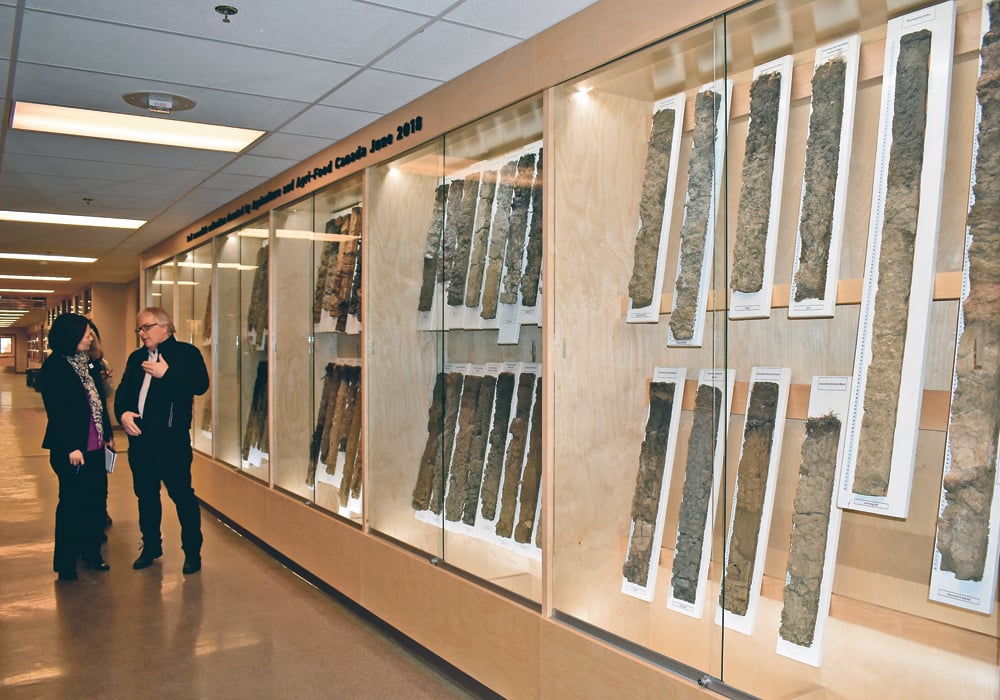The 110 vertical samples now residing at Lethbridge College are considered priceless reminders of province’s soil legacy
Soil can tell tales. Its layers, colours and textures reveal events of yesterday, yesteryear and eons past.
The 110 soil monoliths collected by Agriculture Canada researchers in the 1950s and 1960s are among those storytellers. The narrow columns of soil about one metre in length and 20 centimetres across are now on display at Lethbridge College, having been donated by Agriculture Canada and officially recognized in a ceremony Jan. 29.
It took about 30 years for the transition — a government process akin to the slow formation of soil itself, it’s been said.
Read Also

Farming Smarter receives financial boost from Alberta government for potato research
Farming Smarter near Lethbridge got a boost to its research equipment, thanks to the Alberta government’s increase in funding for research associations.
The researchers who collected the vertical soil samples and why they did it remains a bit of mystery, but the collection includes samples mostly from southern Alberta as well as Yukon.
Formerly housed at the Agriculture Canada Lethbridge Research Centre, the monoliths were mainly used for instructional purposes in recent years.
“While the details of the origin tale of the soil monoliths has grown murky with time, the real story they tell is in their structure, their texture, their pores, their colours, their layers, in the organic matter and minerals,” said Shannan Little, assistant director of research with Agriculture Canada in Lethbridge.
“We at Agriculture and Agri-Food Canada recognize the irreplaceable value of these treasures and we’re grateful that they found a home in the hall of the Lethbridge College. Here they can be accessed by the public, by students and by instructors and serve to educate and further reveal the mysteries of soil genesis and classification and perhaps even encourage new minds to explore the world of soil further.”
Ken Perl, a former soils instructor at the college, initially broached the idea of moving the display to the college about 30 years ago. He and the late Johan Dormaar, a renowned Ag Canada soil scientist and researcher, thought it would be an ideal location for student and public access.
But such a move had to be approved by the federal government and other priorities intervened in the decision-making.
“Really I’d lost all hope of ever having those actually delivered here,” Perl said.
However, college instructors and Jim Miller of Agriculture Canada were persistent in their requests and the display was carefully moved to the college last summer, where a lighted and labelled display case shows them to advantage.
“Those samples are priceless. A lot of the areas you can’t go back to. They’ve been plowed up or paved over. They really are a legacy type of item,” said Perl.
On paper, the display has been valued at $240,000 but Perl considers them to be priceless in terms of the history and knowledge they reveal about soil structure and the historical record.
During his teaching career, he estimated he took about 1,700 students over to the research centre just to show them the monoliths.
“There was no substitute to that soil collection out there,” he said.
Though it is a large collection, it isn’t a complete one, said soil pedologist Ron McNeil. There is little representation from Alberta’s north and central regions. As well, at least one new soil classification has been determined since the collection was made.
The collection’s permanent home is on the third floor of the college’s Cousins building near the soils lab.


















